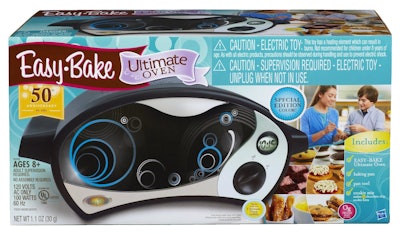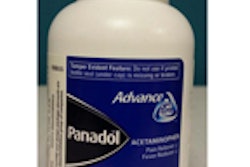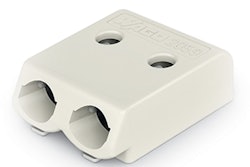Packaging is the brand’s point of physical contact with the consumer. Now take a step back and look at the retail shelf: Which brands entice consumers to pick up a specific product? Category packaging is, frankly, a sea of sameness turning most product brands into commodities.
What we need is more disruption. Marketers discuss it in regard to innovative product development, but somehow, packaging has gotten lost in the conversation. It’s often an afterthought and then just as often dismissed as “too expensive.” The former isn’t a good mindset, and the latter isn’t necessarily true. When a few brands dare to rethink category packaging and develop a disruptive solution, it creates a stir in the marketing world, and more importantly, among consumers.
Disruptive package design is about more than creating buzz, although that’s a nice, to-be-expected dividend. It’s really about enhancing the customer experience in a meaningful way; one that elevates the brand among its competitors. Disruptive packaging delivers a unique brand personality in a memorable and emotive manner, defying product commoditization. Commoditization doesn’t lead the consumer to make an emotional connection with a brand; a unique personality does.
Innovative brands make their marks early and often as new products are launched. Method Home, Axe Personal Care products for men, and MGM Entertainment’s Lalaloopsy Dolls are good examples. Their brand owners rightfully assess packaging as a core brand value. These brands own mindshare not only because of their products, but also because of the packaging that delivers them. The best examples of disruptive packaging change the manner in which consumers interact with and use products. Standing out is only the first litmus test; consumers will gravitate to the brand packaging that disrupts, but then it must deliver more perceived value, as well. Graphics and unusual structure alone is skin deep. Consumers:“What else are you doing for me?”
To disrupt and win at retail, consider the following:
1. Innovative products demand equally disruptive packaging:
Think: Tide Pods. MiO liquid water enhancer. Creating new categories affords many opportunities. Brands that launch new categories can develop packaging that lays down a marker. As challenger brands appear, how many will mimic this packaging versus developing unique package structures of their own? Pepsico brought its own water enhancer brand to market recently. Rather than emulating Mio’s water droplet-shaped bottle, Dasani Drops are packaged in an hourglass-shaped structure, reinforcing its “0 calories” marketing message on pack, no doubt. That’s what leaders do. There is clear brand differentiation here, and consumers will purchase based on the visual and verbal brand communication found on the packaging.
2. Disruptive packaging can be focused on improving functionality or relevance to meet consumers’ changing needs:
Marketers must observe how consumer behaviors are shifting and how they use products, and then change package structures in an innovative manner before their competitors do.
Pour spouts that take better aim are an example. Pop-top lids on Campbell’s soup are another innovation. The best examples involve rethinking package structure entirely based on consumers’ changing needs. StarKist’s move to put tuna in a pouch makes the product portable, allowing consumers to take tuna to work. No can opener is needed to make a sandwich or toss it with salad greens. The company wisely offers tuna in the ubiquitous cans for home consumption as well, but the pouch ups the ante on convenience.
3. How about rethinking product categories?
Hasbro took a daring leap when they positioned Nerf, a strongly branded product line for boys, for girls—no small challenge. But Lego had paved the way with its Lego Friends line aimed at young girls by researching what they really wanted. The payoff? A 36% increase in Lego profits in 2012.
Nerf decided to connect with young girls with a dedicated sub-brand of archery and blaster toys. Dubbed Nerf Rebelle, the brand may be benefiting from the power of Princess Merida of Disney Brave fame, and Katniss Everdeen, heroine of The Hunger Games. This line is not “girly” in the traditional sense but aggressive and spirited, embodying the Nerf brand positioning and embracing it perfectly in its product styling, branding, and approach to graphics, as well as with spirited product names like Heartbreaker, Pink Crush, and Sweet Revenge. This is no softer version of a boys’ brand to appeal to girls. This sub-brand is legitimately “bad-ass,” but with a fashion sense!
The ideal Nerf Rebelle girl is aged six to 12, adventurous and active, and social and creative, and likes to play outside, ride her bike, and play video games. Unique to Nerf Rebelle: The darts come in different colors and designs, and there’s a Nerf Rebelle app that allows girls to interact with each other in a team-oriented way during blaster battles.
4. For challenger brands, it’s crucial to stand out in a crowded marketplace.
Stating that products feature innovative new formulas or features doesn’t engage consumers. Disruptive packaging has the power to garner serious attention so that consumers will evaluate them. Do they deliver new or additional value over competing products in the marketplace?
Plum Organics food and snacks for babies, toddlers, and young children created disruptive packaging that was solution-based, but they ended up disrupting a category where packaging has remained the same for decades. The brand re-imagined the category in 2008: Why not offer highly innovative, quality food combos in squeezable containers rather than glass jars? These products are shelf-stable, so they enable busy parents to grab and go, but they’re also convenient for home use. What’s great is that even infants who are a few months old can feed themselves by sucking on the package opening. From Mashable Oatmeal in pouch packaging to Yogurt Mish Mash and unusual combinations of fruits and veggies—these are innovative products in equally innovative packaging.
This disruptive packaging powered growth for the brand from a little less than $1 million in revenues in 2008 to $38 million by 2011. How powerful was Plum Organics’ packaging in the marketplace? Major baby food companies Gerber and Earth’s Best developed similar pouch packaging. Both brands reportedly enjoyed double-digit or triple-digit sales growth, as a result. Bottom line: Plum Organics has carved out a unique brand presence positioning the company as an innovator for product and packaging. Campbell Soup Co. acquired the brand in June 2013 but plans to allow Plum Organics to remain a stand-alone unit, a smart move that enables the brand to continue to innovate with Campbell’s branding and supply chain muscle behind it to help accelerate its growth.
5. There are packaging opportunities when marketing research divulges unexpected consumer information.
Rather than an unusual package structure, new brand communication may present the ideal solution. Hasbro packaged a special Easy-Bake Ultimate Oven for the brand’s 50th anniversary in a disruptive manner. Long considered a gender-specific toy for girls, research showed that boys have also enjoyed baking treats with Easy Bake ovens, so why not include visuals of a girl and a boy? While some marketers have discussed this packaging in regard to making a political statement, it is rather an acknowledgement that young people of both sexes enjoy playing with Easy Bake ovens, and the new packaging confirms this fact.
It’s clearly important for major category players, even classic brands, to conduct ongoing marketing research so that they can leverage the full potential of their products with their packaging while disrupting categories that have become status quo. Consumer demographics should not be taken for granted—those demographics may have shifted or stretched in surprising ways. Research will capture what consumers find relevant today and how they actually use and interact with products, suggesting how packaging can become disruptive. For challenger brands, both product and packaging should present an innovative perspective, otherwise they will find it hard to get traction in mature categories and likely fail at retail.
The brands that win the future will have done so not only by innovating products, but by disrupting categories with equally innovative packaging that will meet consumers where they are now and where they are going.
Ted Mininni is President of Design Force, Inc., a package and licensing program design consultancy to the consumer product and entertainment industries. He can be reached at 856/810-2277.



























